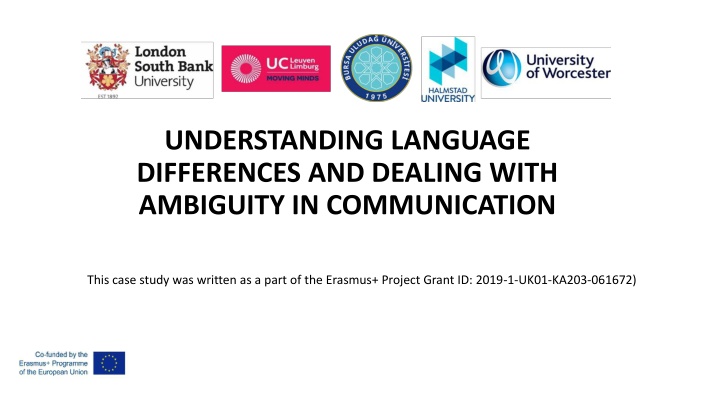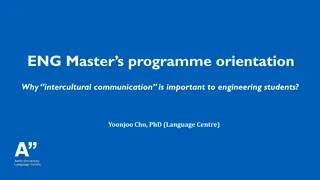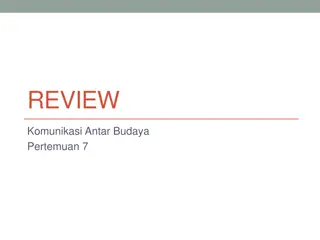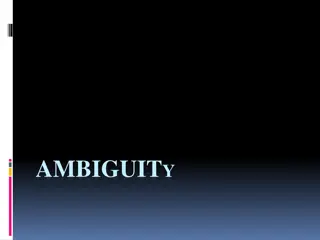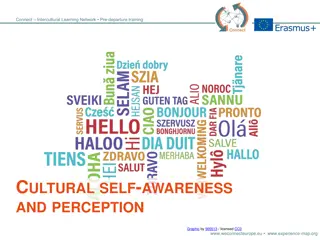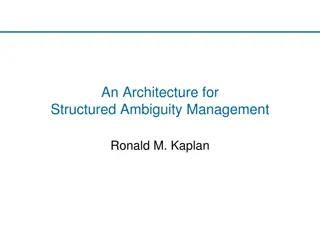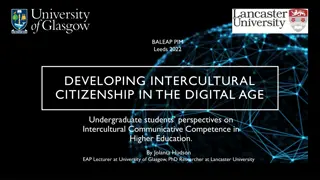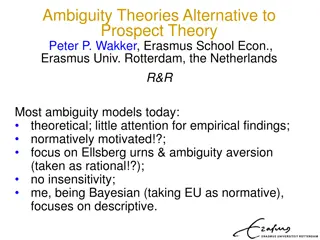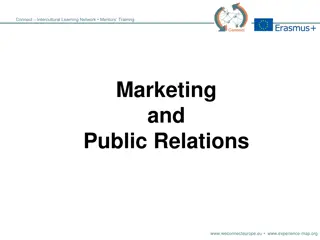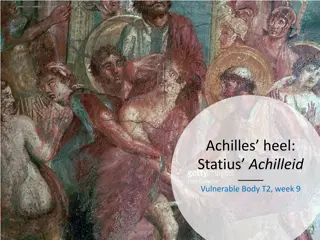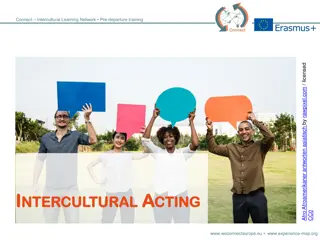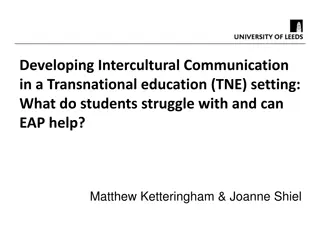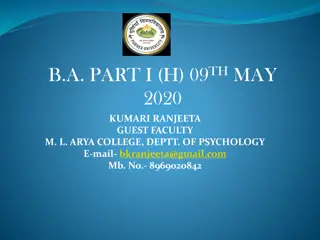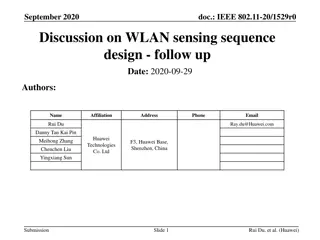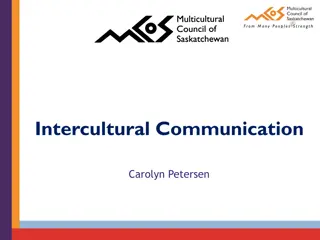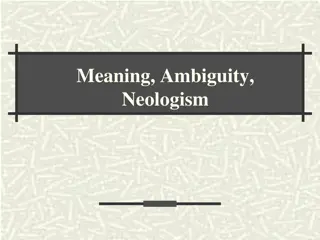Coping with Ambiguity in Intercultural Communication
This case study delves into the importance of managing ambiguity in communication, particularly in the context of language differences, for effective intercultural collaboration. Through exploring challenges faced by EducationCo and strategies for overcoming language barriers, it highlights the essential skills needed by managers to navigate intercultural communication successfully. References from experts in the field provide additional insights into cultural dynamics and trust formation in multicultural environments.
Download Presentation

Please find below an Image/Link to download the presentation.
The content on the website is provided AS IS for your information and personal use only. It may not be sold, licensed, or shared on other websites without obtaining consent from the author.If you encounter any issues during the download, it is possible that the publisher has removed the file from their server.
You are allowed to download the files provided on this website for personal or commercial use, subject to the condition that they are used lawfully. All files are the property of their respective owners.
The content on the website is provided AS IS for your information and personal use only. It may not be sold, licensed, or shared on other websites without obtaining consent from the author.
E N D
Presentation Transcript
UNDERSTANDING LANGUAGE DIFFERENCES AND DEALING WITH AMBIGUITY IN COMMUNICATION This case study was written as a part of the Erasmus+ Project Grant ID: 2019-1-UK01-KA203-061672)
Teaching Objectives Students/learners will be able to: Understand the importance of coping with ambiguity in communication, such as due to language differences, is key to effective intercultural communication. Explore how managers may overcome language barriers in intercultural communication. 2019-1-UK01-KA203 061672
The Case Study Listen to the narrated Case Study provided and consider the following questions: 1. Why are intercultural skills in communication important for EducationCo? 2. What are the key issues in intercultural communication EducationCo is facing with respect to its international partners? 3. What does David s experience with intercultural communication teach us about the extra effort managers need to put into resolving communication issues arising from language differences? 4. How can coping with ambiguity in intercultural communication improve intercultural collaboration? 5. How do you suggest that David trains the new recruitment officer in dealing with ambiguity in intercultural communication? 2019-1-UK01-KA203 061672
References Erez, M., & Gati, E. (2004). A dynamic, multi-level model of culture: From the micro level of the individual to the macro level of a global culture. Applied Psychology: An International review, 53(4), 583-598. Keyton, J. (2011). Communication and Organisational Culture: A Key to Understanding Work Experiences, 2nd ed., Sage. Meyer, E. (2015). When culture doesn t translate. Harvard Business Review. Available at: https://hbr.org/2015/10/when-culture-doesnt-translate. Tenzer, H., Pudelko, M., & Harzing, A-W (2014). The impact of language barriersTenzer, H., Pudelko, M., & Harzing, A-W (2014 on trust formation in multinational teams. Journal of International Business Studies, 45, 508-535. Zhang, L.E., & Harzing, A-W (2016). From dilemmatic struggle to legitimized indifference: Expatriates host country language learning and its impact on the expatriate-HCE relationship. Journal of World Business, 51(5), 774-786. 2019-1-UK01-KA203 061672
